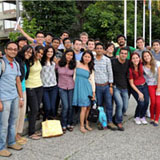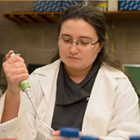MPrime Milestones
What happens when several determined mathematical scientists set out
to change the research landscape in Canada? Exponential results!
Note: Prior to 2011, Mprime was known as MITACS
1998
1999
-
$3.21 million in funding announced from the NCE.
2001
-
Total industry research investment passes $2.5 million
2003
18 internships
2004
- $6 million in funding announced from the NCE, Western Economic Diversification Canada, the Government of BC and Government of Alberta.
30 internships
2006
170 internships
2007
-
$11.9 million in funding announced from the Government of Canada, Government of BC, Government of Nova Scotia, Government of Saskatchewan, Atlantic Canada Opportunities Agency and Fonds de recherche du Québec.
240 internships
2008
-
$26.3 million in funding announced from the Government of Ontario, Government of New Brunswick, Government of Newfoundland and Labrador, the Industrial Research and Development Internship program and the Industrial Research Assistance Program.
675 internships
2009
- MITACS 10 year anniversary
-
$635,000 in funding announced from the Government of Manitoba, Government of British Columbia and Western Economic Diversification Canada.
1,060 internships
2010
-
$15.6 million in funding announced from FedDev and the Government of Ontario.
1,544 internships






















